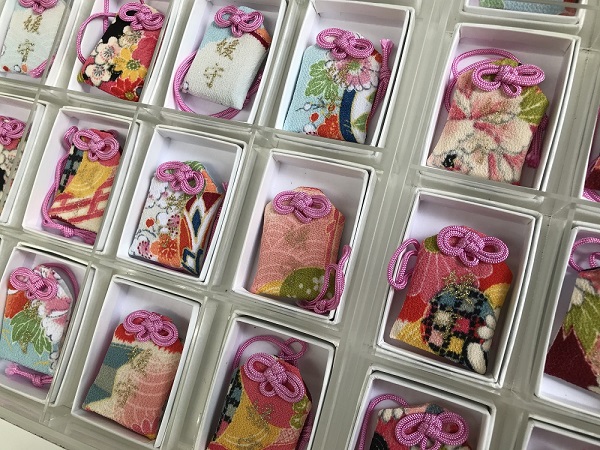Contents
Shimogamo Shrine is a popular power spot for matchmaking and beauty! Recommended sightseeing spot with the Seven Wonders!
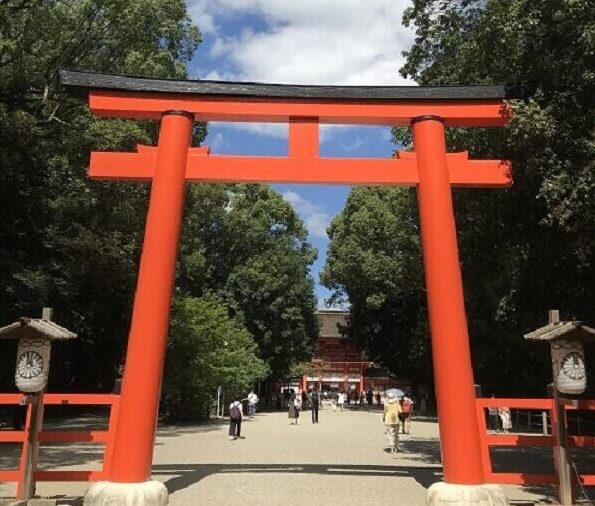
The formal name is “Kamomioya-jinja Shrine”. It is Commonly known as “Shimogamo-jinja Shrine”. Shimogamo Shrine is one of the oldest shrines in Kyoto. Shimogamo Shrine is located in the Tadasuno forest, a primeval forest with trees growing high in the sky. It is a shrine that has been deeply worshipped since ancient times.
The wind on your skin feels very mysterious as you walk through the Tadasuno forest, which is a sacred area.
After passing through the approach surrounded by the fresh air of a stream, you will see the large torii gate of Shimogamo Shrine.
The benefits are world peace, good harvest, health, traffic safety, etc. In addition, Tamayori Hime no Mikoto is considered to be the female guardian deity, and has long been worshiped as the god of marriage, safe childbirth and child-rearing.
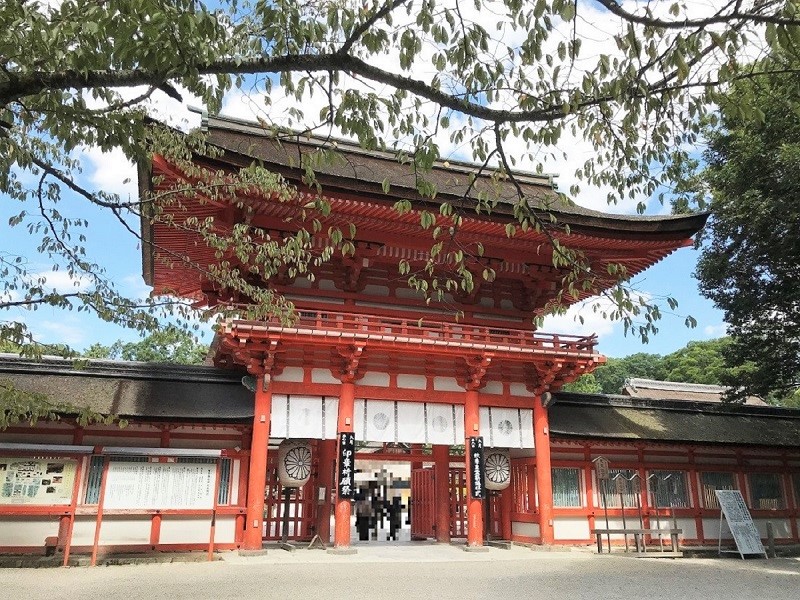
Shimogamo Shrine, which has been worshipped since ancient times, offers a wealth of blessings.
The deity Kamotaketsunumi-no-Mikoto is the god of guidance who opened Kyoto to the world.
Aioi Shrine is a must-see for its magical tree that brings good luck in marriage. The shrine is popular as a power spot and attracts many worshippers.
Shimogamo Shrine’s deity, Princess Tamayori, is a goddess of beauty and is worshipped as a goddess of beauty. Kawai Shrine (a branch shrine of Shimogamo Shrine), a popular power spot for beauty, is also visited together.
The official name of Shimogamo Shrine is Kamomioya Shrine.
The name “Shimogamo Shrine” comes from its location downstream from the Kamo River.
Together with Kamigamo Shrine (Kamowakeikazuchi Shrine), it enshrines the clan deity of the Kamo clan.
Shimogamo Shrine is the site of the Aoi Matsuri (hollyhock festival), one of the three major festivals in Kyoto, held every year in May.
About the Deity of Shimogamo Shrine

The deity of Shimogamo Shrine is enshrined on the left side of the main hall (west hall) as Kamotaketsunumi-no-Mikoto (father of Princess Tamayori). On the right side of the main hall (east hall), Princess Tamayori is enshrined.
In the Chronicles of Japan, Kamotaketsunumi-no-Mikoto is said to have incarnated into a yatagarasu (a three-legged crow) and became a golden kite during his victorious expedition to the east, and is thus regarded as the god of victory.
Kamotaketsunumi-no-Mikoto is said to be the guardian deity of Kyoto, and is said to be blessed with world peace and a bountiful harvest due to his efforts to spread agriculture and stabilize people’s lives.
Princess Tamayori is considered the guardian deity of the female way of life.
According to a myth, Princess Tamayori took an arrow with a white feather that came from the Kamo River, placed it on the floor, and became pregnant, giving birth to a son. Shimogamo Shrine is believed to be the god of love fulfillment, fertility, and safe delivery.
About the History of Shimogamo Shrine

The date of foundation is not specified but is said to be BC, making it one of the oldest shrines in Kyoto.
It seems that the shrine had been enshrined even before that time, since there is a record that the zuigaki was rebuilt in the 7th year of Emperor Sojin’s reign (90 B.C.).
The shrine has been revered by the Imperial Court since before the Nara period (710-794), and there is a record that the Kamo Matsuri (hollyhock festival) was held there from 544, the 5th year of Emperor Kinmei (544), so it seems that a grand festival was held there for over 1400 years. The bustle of the festival is even depicted in the Tale of Genji.
“Buden (a dance hall)” where the rituals are held at the Aoi Matsuri (hollyhock festival)
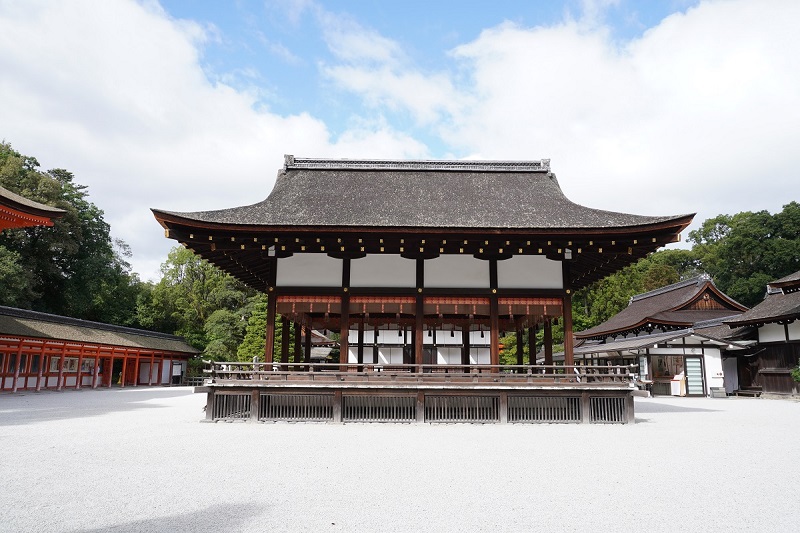
Entering the vermilion-lacquered romon (tower gate), the Buden (dance hall) is located in front of the gate. The graceful curves of the roof make for a beautiful, spacious main hall. Located in the center of the plaza, it is not flashy, but its prestige can be seen. It is designated as an important cultural property.
During the Kamo Matsuri (hollyhock festival), the “Shato-no-gi” is held to perform the ritual text, and the “Azuma-play” dance is dedicated here.
Honden, The Main shrine of Shimogamo Shrine

To reach the main shrine, visitors pass through the majestic Chu Gate, located beyond the Maiten (dance hall).
The main shrine enshrines Tamayohime-no-Mikoto in the east hall and Kamotaketsumi-no-Mikoto in the west hall. Both the east and west main shrines are national treasures.
The shrine used to be relocated once every 21 years, but since the Meiji era (1868-1912), the shrine has been repaired instead of being rebuilt as a national treasure in order to preserve the cultural assets.
Koto-sha Shrine (Shrine of the Chinese Zodiac)
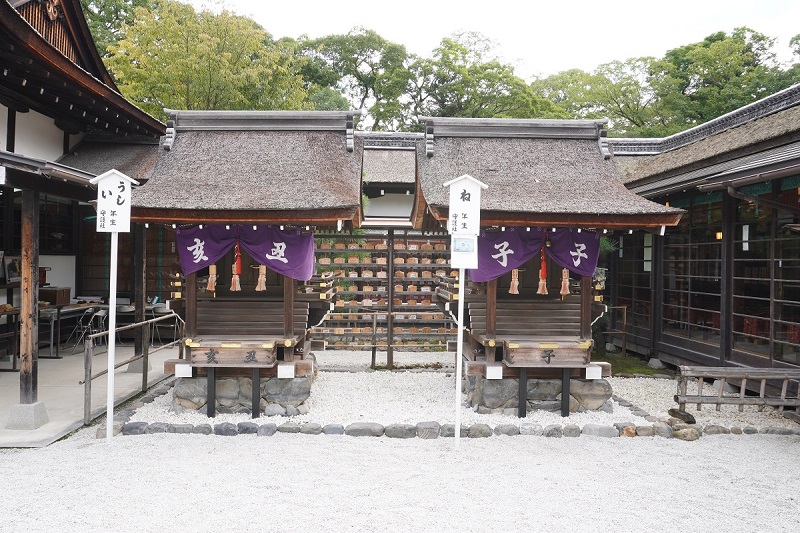
This shrine enshrines Okuninushi no Mikoto, and has been worshipped since ancient times.
There are seven shrines, and the twelve signs of the Chinese zodiac are enshrined as guardian deities. It is believed to be beneficial to worship the guardian deity of your birth year.
The guardian deities of each of the seven shrines are as follows
Hitokotosha: Ookunitama-no-Mikoto (Snake, Sheep) and Mikunitama-no-Mikoto (Horse).
Futakotosha: Okuninushi-Mikoto (Rat), Omotonushi-no-Mikoto (Ox, Boar)
Mikotosha: Okinoki-no-Mikoto (Tiger, Dog), Shikono-no-Mikoto (Rabbit, Rooster), Hachigoho-no-Mikoto (Dragon, Monkey)
Mitarashi Shrine, to purify oneself

This is a shrine for purification and Mitarashi-sha located in a pure place with a stream flowing through it.
It is also called Inoue Shrine because it is enshrined on top of a well casing.
The deity is Seoritsuhime-no-Mikoto.
In front of the shrine is the Mitarashi Pond. It is said that fresh water naturally gushes out from the bottom of the pond and that “Mitarashi Dumpling” was formed in the shape of the bubbles that came out of the pond. It is known as the birthplace of Mitarashi Dumpling.
Various events are held throughout the year at Mitarashi Shrine.
In March, there is the Nagashi Hina Matsuri (Doll Floating Doll Festival), where hina dolls are floated down the Mitarashi River.The Midsummer Day of the Ox, the Mitarashi Festival (Ashitsuke Shinji) is held to pray for the repelling of disease and to purify the body of the deceased.
In February, the Mitarashi River is decorated with plum blossoms, and the dark pink blossoms of the ume (Japanese apricot) trees, along with the brightly colored Taiko bridge, make the precincts of the shrine a colorful sight. They are called “Korin-no-Ume” (plum blossoms of Korin).

There is a “mizu-mikuji (water fortune slip)” at the Mitarashi Shrine of Shimogamo Shrine. When I put it on the Mitarashi pond, the characters appeared.
God of marriage “Aioi Shrine”
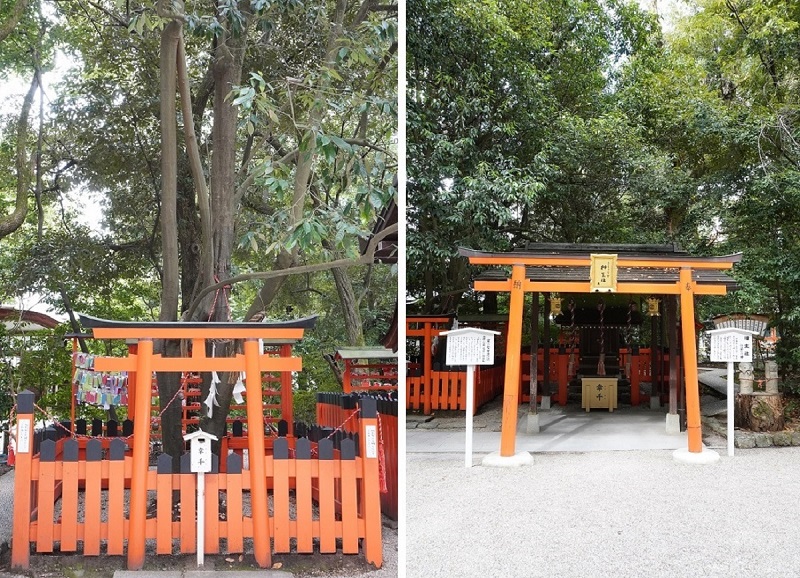
This is the Aioi Shrine, the youngest shrine of Shimogamo Shrine.
The deity is Kamiomusubi-no-Kami. He is the god who gives us various good marriages. The shrine is believed to be a god of marriage and is a popular power spot for the fulfillment of love.
On the left side of the Aioi Shrine, there is a sacred tree for marriage with a miraculous power to bring good luck and a child growing at its base.
The sacred tree is said to originate from the Tadasuno forest and is one of the Seven Wonders of Kyoto.
It is believed to bring good luck in marriage, safe childbirth and child rearing, and family happiness.

There is a cute amulet store near the Aioi Shrine.
You can purchase your own unique and cute good luck charm, Ehime-mamori, which can only be found at Shimogamo Shrine.
These stylish good luck charms are made of kimono patterned fabric and all have a different design. It will be your own unique and one-of-a-kind good luck charm in the world. There are “Ehime-mamori” for women and “Hiko-mamori” for men.
It is believed to bring good luck in marriage, safe childbirth and child rearing, and family happiness.
Izumoinoue Shrine and Hiraki Shrine, gods of good fortune and protection from bad luck
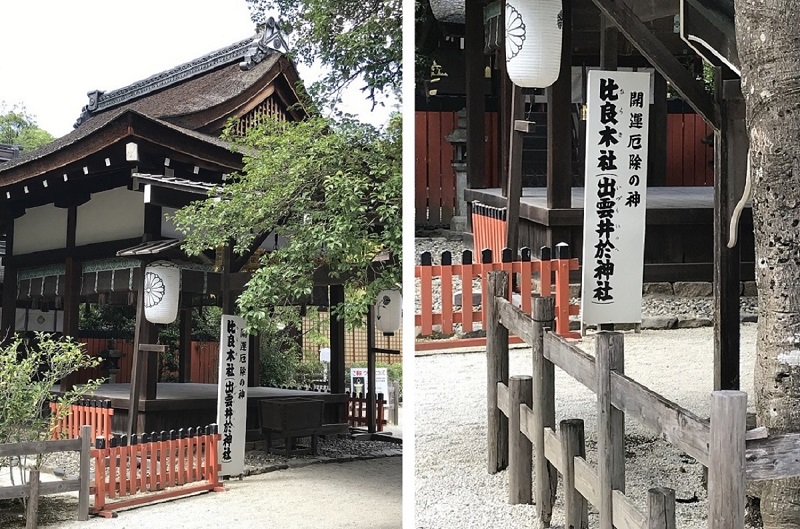
Known as Hiraki-jinja Shrine, the god for avoiding evil. It is said that if you plant some kind of tree around Hiraki Shrine, it will become a holly tree and fulfill your wishes. Therefore, it is called “Nandemo Hiiragi”.
Musubi no Kami is enshrined, Known as the god of marriage, engagement. There is the sacred tree of match-making, two trees meet each on the halfway, it is said that the appearance of the gods of marriage, childbirth, family safety.
Access
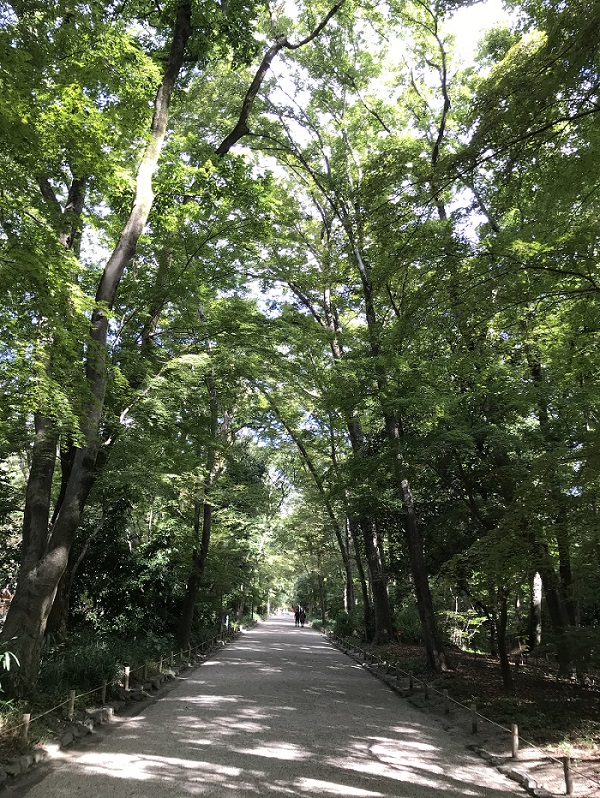
It takes about 10 minutes on foot from Demachiyanagi Station on the Keihan Line.If you take a bus from Kyoto Station or Shijo-Kawaramachi Station, it will stop near Shimogamo Shrine.From Kyoto Station, take city bus No. 4 or No. 205 and get off at Shimogamo-jinja-mae.
From Shijo Kawaramachi, take city bus No. 4 or No. 205 and get off at “Shimogamo-jinja-mae” bus stop.
